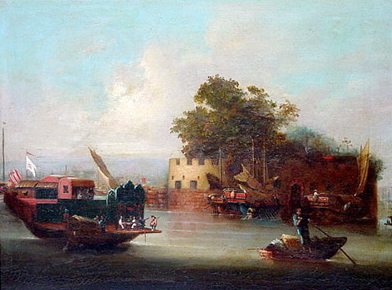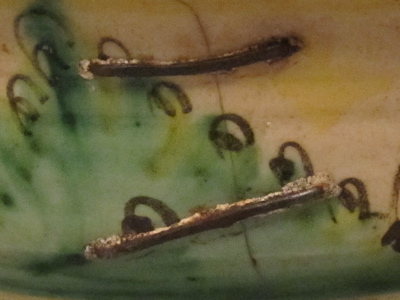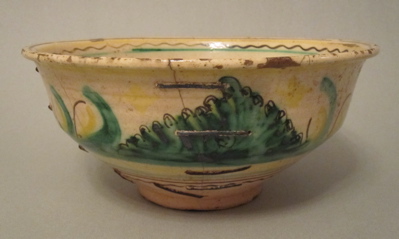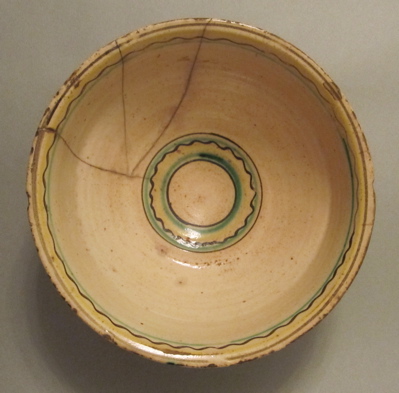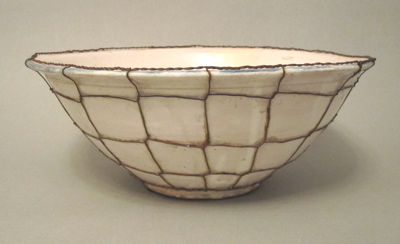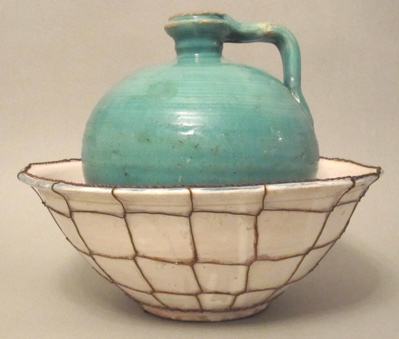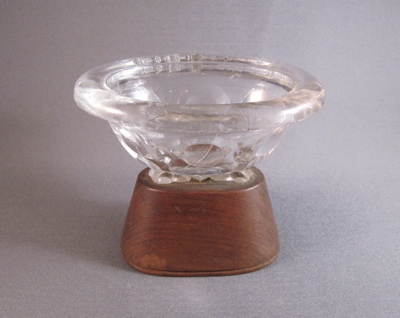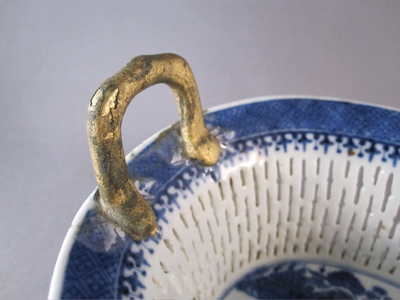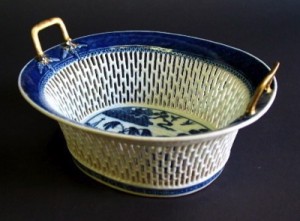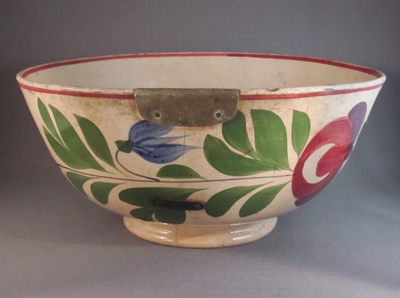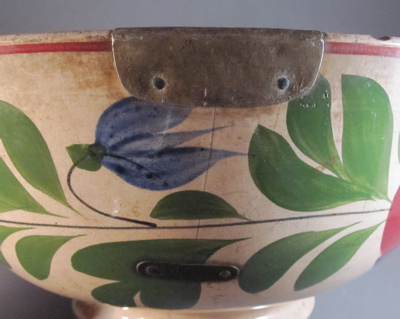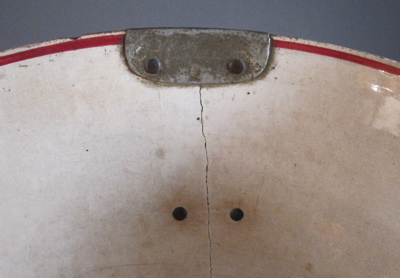A wonderful Chinese export quatrefoil footed dish with an unusual fort scene, painted in polychrome enamels and measures 11″ by 8-3/4″ and is 2-3/4″ high. I found this piece in 1995 at the long gone and much missed outdoor Chelsea flea market on Sixth Avenue & 26th Street in NYC. At the time of purchase, I paid more for this dish than any other piece in my collection, but I loved the decoration combined with the many repairs and had to have it. Fifteen years later, it remains a favorite of mine and I have yet to see another example with a similar decoration
If anyone can translate these Chinese characters I would greatly appreciate it
Multiple repairs include metal “cuff” patches mask large chips along the edges…
and crudely made lozenge-shaped iron rivets, which seem to have been mass produced and are different than the more commonly seen staples made from wire
The decoration on my dish could have been inspired by Fort Folly in the Pearl River, as seen in this fine China trade oil painting, c.1840
photo courtesy of Richard Gould Antiques






